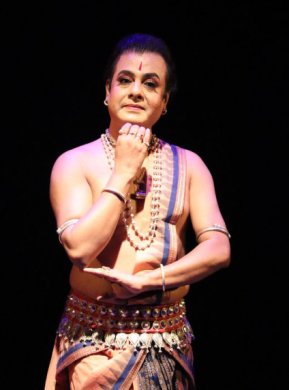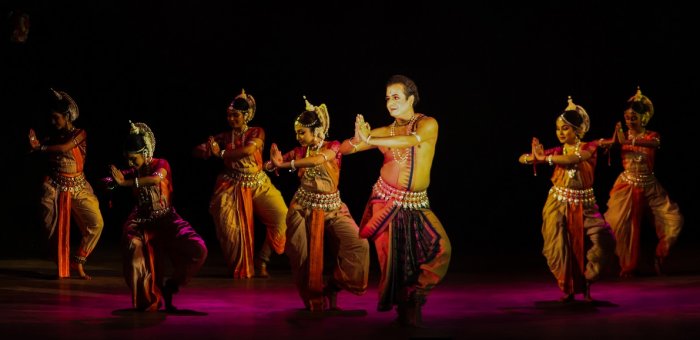
|   |

|   |
Hey mor Devata - Tapati Chowdhurie e-mail: tapatichow@yahoo.co.in January 19, 2021 Indian classical dance forms as we know them do not actually belong to the hoary past as we are used to believing. Natya Sastra, the earliest known treatise of dance, drama and music does not mention them by name, which only goes to prove that our dance forms have undergone revival and restructuring under visionaries to be what they are today. The advent of British colonialism was part responsible for trying to unearth our ethnic roots to rebuild our injured pride. But interestingly each of the forms has a carefully structured "margam" which is one full definite course wherein, dance items are performed in a traditional order. History of each form tells us how this traditional order was derived at. Poets have composed joyous songs or hymns of praise, tribute, thanksgiving, or triumph and have united their voices in great paeans to gods and goddesses and devotees as well as to subjects that are secular. It will be worthwhile to remember that our earliest texts have no mention of divinity, which is not under the purview of this piece of writing. The subject matter of the bulk of the choreographic content of our dance forms have much to do with iconic figures of gods and goddesses. In a way, these choreographic works have lost touch with contemporary life, contrary to our related art works of painting, sculptures et al.  Rajib Bhattacharya 'Hey mor Devata' by the artistic director of Srjan Chhanda, Rajib Bhattacharya - an Odissi dancer/teacher of repute - was a breath of fresh air during these stressful times of the prevalent pandemic. 'Hey mor Devata' was a garland of songs from Gitanjali with its deep philosophical roots. It was a tribute to Rabindranath Tagore, who believed in the divinity of man and the divinity of nature in all its different manifestations. Tagore heard and sang the songs of joy that reverberates through the world in all its elements. He broke into a song and said that he had come out to partake in that joy, because he was blessed to be invited in this festival of joy. He had heard and seen the world in all its glory. The realization of his true existence had been revealed by nature's divinity. He wrote about the gathering clouds in heaps causing torrential rains when his wait for his devata became longer and longer. His requests to Nature to shower her grace on him made him break into a shower of his own raga based compositions. In one of his songs, he bows his head to the feet of god to be blessed -"Aamar matha natho kare dao hey tomar charana dhulir pare". In his beloved he saw his god and in his god he saw his beloved. His humanism made him write, "Thou has made me endless, such is thy pleasure." The divine being is offered a silent prayer. Like the cascading water of a spring the devotee is unaware of his destination. He waits for his god.  Rajib Bhattacharya and group Bhattacharya's choice of songs composed into dance brought to the forefront the gist of Tagore's philosophy, which was recognized by the world in 1913. Song offerings of the poet were put into the vocabulary of Odissi to produce a mesmerizing garland for the audience. Group dances by the students of Srjan Chhanda clad in Odissi costumes made of red bordered sarees created the right effect. Rajib Bhattacharya danced in the group along with his students, which was commendable. Through selected songs from Gitanjali and shlokas from the Upanishads, Rajib created a piece with a distinct flavour which was spiritual. Rajib Bhattacharya's concept was scripted by Subhodeep Chakraborty. The event was held at Gyan Manch supported by The Ministry of Culture, Government of India.  Tapati Chowdurie trained under Guru Gopinath in Madras and was briefly with International Centre for Kathakali in New Delhi. Presently, she is a freelance writer on the performing arts. |